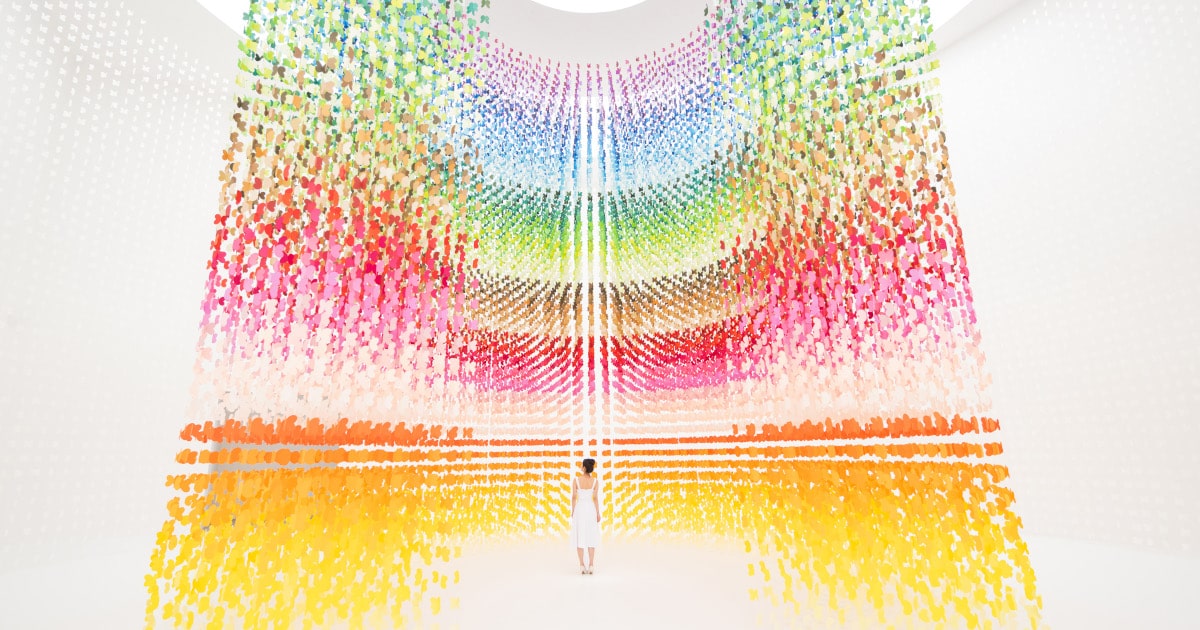Missing Lebanese Wars, Linguistic
1996 - Photography (Photography)
112 x 127 cm
The Atlas Group
It is a little known fact that Lebanese historians were also gamblers during the war. They met every Sunday at the race courses. Race after race, the historians were positioned behind the press photographers who were there to take a picture of the winning horse passing the finishing line. The historians betted on how many fractions of seconds before or after passing the line the photograph would be taken. That is to say that no photo showed the horse on the finishing line. Each page of the notebook contains an image of the horse passing the finish line cut out of the Annahar newspaper on the following day. It features the annotations of doctor Fakhouri on the length and duration of the race, on the winning horse and his timing, his average speed, the initials of the different historians and their bets, the time between the snapshot and the passage of the finishing line, a very brief description of the winning historian (here the linguist). These documents provoke questions about historical fact. Why are there no images of the precise moment when the horse passes the finishing line? Does the press authorize the reproduction of false information? Conscious of the impossibility of capturing the exact moment, the historians bet not on the horses but on the photographer’s margin of error. The evidence about an event is not necessarily linked to the production of an objective document. There can be no certain objectivity with photographic material.
The Atlas Group is a research and artistic project founded by Lebanese artist Walid Raad in 1999. Presented as an archive project, The Atlas Group aims to investigate the boundaries between document and fiction, history and memory, discourse and experience. Through its different series, it questions historiographical processes in regards to one’s perception of time, space and events; manipulates vernacular images and archival documents to compose alternative narratives of Lebanon’s history, with an emphasis on the Lebanese wars of 1975 and 1990. The Atlas Group has been critically acclaimed and internationally praised for questioning the versatility and categorization of art forms, its capacity to serve a political and historical purpose, and to challenge notions of authority in the writing of History.
Colors:
Related works sharing similar palette

© » KADIST
Jean-Charles de Quillacq
2013Adam is an emblematic work within Jean-Charles de Quillacq’s oeuvre...

© » ARTSJOURNAL
Could visiting a museum be the secret to a healthy life? Menu Close Does the simple fact of being in contact with art have any specific effects? (Shutterstock) Emma Dupuy , Université de Montréal Author Emma Dupuy Postdoctoral researcher, cognitive neuroscience, Université de Montréal Disclosure statement Emma Dupuy works in partnership with the Montreal Museum of Fine Arts and has received funding from MITACS, the Université de Montréal and the Fonds de Recherche du Québec...

© » KADIST
Evariste Richer
2008Cumulocumulonimbus capillatus incus functions on the mode of a mise en abîme: it is a cube composed with 8000 dice...

© » KADIST
Lucia Madriz
2014In her geometric paintings on wood panel, Madriz employs the Fibonacci numbers to illustrate, in simplified form, the pattern of natural plant growth—beginning from a single stem, and growing exponentially, rationally, and efficiently outward from there...

© » KADIST
Chloé Quenum
2017The stained glass windows of Chloé Quenum’s Les Allégories evoke the sacred and describe the movement of a rooster in the form of patterns extracted from a wax fabric found in Benin...

© » ARTS EQUATOR
Weekly Southeast Asia Radar: Is Filipino gender neutral?; Cultural tours go online | ArtsEquator Thinking and Talking about Arts and Culture in Southeast Asia ArtsEquator Radar JL JAVIER via CNN Philippines July 9, 2020 ArtsEquator’s Southeast Asia Radar features articles and posts about arts and culture in Southeast Asia, drawn from local and regional websites and publications – aggregated content from outside sources, so we are exposed to a multitude of voices in the region...

© » KADIST
Christopher Badger
2011Drowned Wood Standing Coiled (2011) consists of two sculptures, inextricably linked...

© » MODERN MET ART
Emmanuelle Moureaux’s New Work Fills a Room with Butterflies Home / Art / Installation Thousands of Colorful Butterflies Invade Shanghai Pavilion in Emmanuelle Moureaux’s Latest Installation By Regina Sienra on February 5, 2024 Photo: Daisuke Shima Architect, artist, and designer Emmanuelle Moureaux has marveled the world with her sweeping colorful installations...

© » KADIST
davi de jesus do nascimento
2022davi de jesus do nascimento’s earthy paintings, from the series sorvedouro , recall his memories as an essentially organic matter...

© » ARTREPORT
#AGOAsks, I Answer: Super Real Pop Art Collection – Art Report News ARTISTS Artist Highlights Artist Interviews Studio Visit VIDEOS ART+ Community Listicles No Result View All Result News ARTISTS Artist Highlights Artist Interviews Studio Visit VIDEOS ART+ Community Listicles No Result View All Result No Result View All Result #AGOAsks, I Answer: Super Real Pop Art Collection by Mia Halabi Jan 26, 2016 in Featured 0 "Marilyn Monroe," Andy Warhol, Art Gallery of Ontario...

© » KADIST
Nikita Kadan
2018East of Ukraine became a place of armed conflict with Russia-backed separatists, who proclaimed parts of (the) Donetsk and Lughansk oblast (administrative region in Ukrainian) to be ‘People’s republics’...

© » KADIST
Natsuko Uchino
2020Squid Currency is a series of 13 non-calibrated double-sided tin coins made using a casting technique dating back to Neolithic times where cuttlebones (squid bones) were carved by hand and then used as a mold...








